The development of networking technology has changed how people connect and communicate in the contemporary world and where we live. Leading this development is the Cat8 Ethernet cable, an advanced high-speed solution tailor-made to meet the burgeoning modern data transmission requirements. What does the Cat8 cable have that other predecessors do not, and why is it the go-to option for other such professionals and technology enthusiasts? This guide seeks to answer that question by providing readers with an in-depth understanding of the Cat8 Ethernet cable’s technical aspects, performance metrics, and practical use, facilitating an enhanced understanding of its significance in contemporary high-speed networking. IT experts, competitive gamers, or even individuals wishing to build a more future-ready network will find this article useful as it provides critical information that will help them make the right choice.
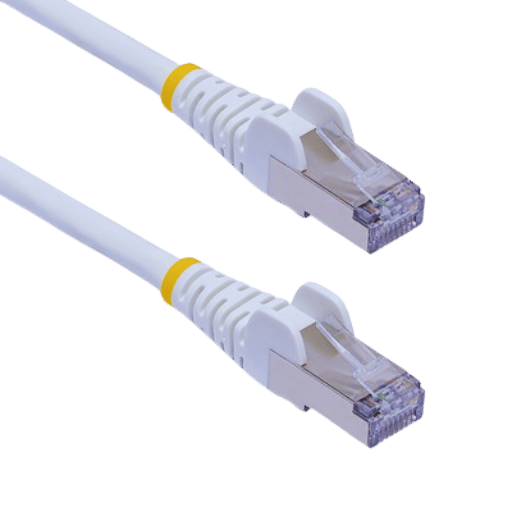
Engineered for outstanding performance, the Cat8 Ethernet cable has a data transmission speed of 40 Gbps within a distance of 30 meters. It has a frequency of 2000 MHz which guarantees low lag and minimal interference. These features make it the perfect choice for fast and reliable connections such as data centers, servers, and advanced gaming systems. It enhances signal quality while reducing crosstalk and electromagnetic interference due to its twisted pair shielding (STP). It can be seamlessly integrated with existing networks due to its compatibility with previous Ethernet standards, offering a reliable solution for the most technologically advancing networking environments.
A Cat 8 ethernet cable is the latest type of ethernet cable designed for super-fast networking. Its data transfer speeds climb to 40 Gbps, and its operating frequency is 2GHz, which is incredibly fast compared to modern network requirements. Cat8 cables are also shielded to minimize interference which provides reliable performance in high electromagnetic areas. These cables are primarily used in professional environments such as data servers or server rooms, although they are also suitable for personal use in places where exceptional connectivity is required.
Like every other Ethernet cable category, Cat8 cables come with a list of distinguishing features. For one, Cat8 cables have the highest focus on modem performance, yielding a top bandwidth of 2000 MHz, more than Cat5e, Cat6, and even Cat6a cables. Support of data transmission at speeds of 40 Gbps and under 30 meters of distance demonstrates that these cables are tailored for performance and dependability. The cables are built with shielded twisted pairs (STP) to reduce crosstalk and electromagnetic interference (EMI) guaranteeing secure and stable data transfer. Also notable is the RJ45 connectors used in terminating the Cat8 cables. This allows for backward compatibility with earlier Ethernet standards such as Cat5 without sacrificing speed. Finally, the durable construction enables the cables to withstand harsh conditions, making them very reliable for demanding network infrastructures.
In comparison to Cat7, Cat6, and other cables, Cat8 Ethernet cables have the best performance and abilities. Unlike Cat7 with 600 Mhz, and Cat6 with 250 Mhz, Cat8’s maximum bandwidth reaches as high as 2000 Mhz. Bandwidth this high allows Cat8 to transfer data at speeds of 40 Gbps over distances of 30 meters or less. This is perfect for use in places such as data centers and frameworks for high-performance computing. Comparatively, Cat7 has speeds of 10 Gbps over 100 meters, and Cat6 offers speeds of 1 Gbps over distances of 100 meters, or 10 Gbps over shorter distances, typically around 55 meters.
Another key difference lies in shielding. Both Cat7 and Cat8 used shielded twisted pair (STP) shielding to block interference, but Cat8 has a more complex shielding system that guarantees lower signal loss and more stability in high-frequency ranges. Cat6 is often sold as UTP or unshielded twisted pair, a configuration more susceptible to interference in high EMI environments.
Application and compatibility differ across all categories. All three types of cables have RJ45 V connectors or GG45 V connectors (in the case of Cat7) and they are backward compatible with older ethernet versions. However, Cat8 is meant for modern data-intensive operations like connecting servers, switches, and storage in data centers. These operations require very high speeds and very low latency. Cat6 and Cat7 are still viable options for home or office networks, but with the high-performance requirements of advanced infrastructure, they fall short.
In terms of construction, Cat8 cables are built with endurance in mind. They usually come with a thicker jacket and more shielding to better endure harsh environmental conditions. These cables are more robust than Cat6 and Cat7, which makes Cat8 the best suited for professional environments where dependability and performance are critical.
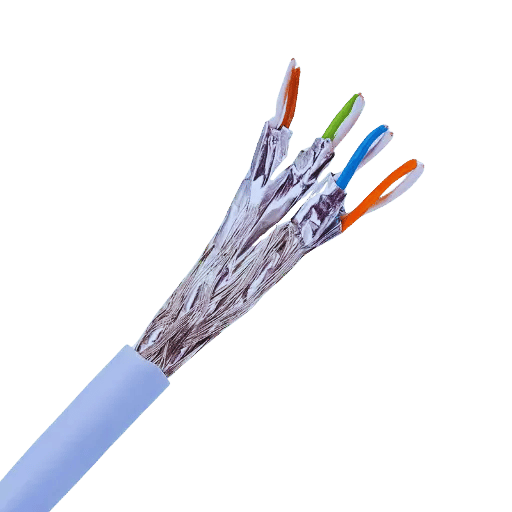
Cat8 cables offer crucial benefits for home networks, especially where high connectivity and investment protection are concerned. Cat8 Ethernet cables offer a data transfer rate of 40 Gbps and bandwidth capacity of up to 2000 MHz, which exceeds the capabilities provided by predecessors Cat6 and Cat7. This enables demanding tasks such as video streaming in 4K or 8K, high-speed online gaming, and handling multiple internet connections
Furthermore, Cat8 cables have advanced shielding that minimizes interference and cross-talk. This provides reliable connection stability no matter the number of other electronic devices present. In smart homes, where IoT devices are common, Cat8 cables reduce the interruption of signals and aid communication between devices. Also, their ability to carry cables up to 30 meters at full speed makes them suitable for most homes.
Considering its enduring characteristics, Cat8 cables are built with tougher jackets and foil shielding which increases the longevity and performance of the cable under different conditions. Furthermore, their backward compatibility with previous Ethernet versions means Cat8 cables can be seamlessly added to your network without any connectivity problems. For clients desiring an investment tailored for a high-performance home network, Cat8 Ethernet cables are an exceptional choice that will stand the test of time.
In terms of speed and performance, Cat8 Ethernet cables are unrivaled and are, therefore, the most suitable for high-end networking setups. Unlike Cat6a bandwidths of 500Mhz, Cat8 cables are capable of a staggering bandwidth of 2,000Mhz, more than quadrupling the previous standard. In addition, they provide data transfer rates of 40 Gbps over a distance of 30 meters (98 feet). With this kind of performance, Cat8 cables are well suited for high-performance computing systems, ultra-fast data centers, and any other demanding low-latency and reliable connections.
Due to enhanced shielding in Cat8 cables, ensuring reliability from signals that may interfere with the network serves to ensure that networks can run at maximum efficiency under high demand loads. This works best under 8k or 4k video streaming, competitive video game streaming, and large file transfers where speed and low latency are a must. These specifications prove that Cat8 Ethernet cables stand out from the rest, ensuring optimization for modern networking demands while providing a massive technological advantage.
Cat8 Ethernet cables are ideal when extreme speed and performance are required, such as in the case of gaming and streaming. Designed to support bandwidth levels reaching 2,000 MHz, these cables offer data transfer rates of up to 40 Gbps, ensuring an uninterrupted connection free of stutters during intense usage periods. For online gaming which is highly dependent on latency, the ultra-low lag on offer with Cat8 cables makes for a very immersive experience, allowing competitive gamers to interact with their environment nearly instantaneously. Streaming in 4K or 8K also benefits greatly from these cables, allowing for uninterrupted playback with no loss in quality even during peak usage periods.
Furthermore, the double shielding of Cat8 cables greatly reduces electromagnetic interference (EMI), enhancing the reliability of the connection in signal-sensitive areas. This feature is ideal for customers who are setting up gaming rigs or home-streaming setups near other electronic devices. The cable is also built durably with gold-plated connectors and weather-resistant materials which increases reliability and longevity over time.
All in all, Cat8 Ethernet cables are the best option available for streamers and gamers alike who want the speed, reliability, and consistency to optimize their activities. These cables are without a doubt a long-term investment due to their adaptable nature.
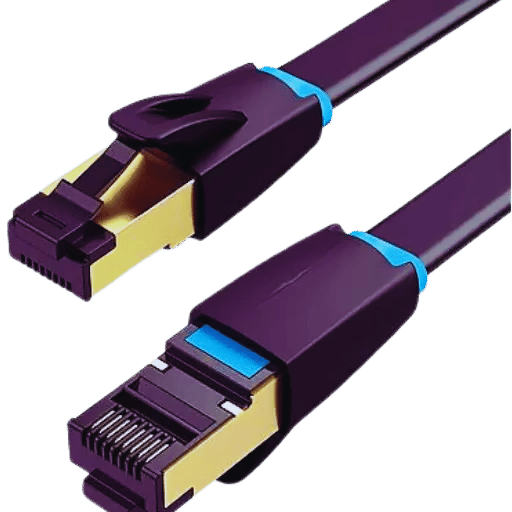
Like any other Type Ethernet cable, Cat8 also has its idiosyncrasies so make sure that the cable installation is methodical. The associated procedures are detailed below for optimal network configuration which also includes Cat6, Cat7, and Cat8 considerations.
Tools and Materials Including Options for Cat6 vs Cat7 vs Cat8 Pre-requisite Items
Make sure the following items are available beforehand:
Cat8 Ethernet cable of the desired length
RJ45 connectors with Cat8 compatibility
Ethernet cable tester
Crimping tool
Wire stripper
Cable ties or organization clips
Cat8 cables have a reputation for functioning effectively in harsh conditions, but for optimal durability, placement is crucial. Make sure to get conduits if dealing with long cables outdoors or if the installation involves routing through walls.
Routing Plan
Design the route from your router/switch to the assigned endpoint device. Provided that the position of the router allows for it, aim for a distance under the maximum recommendation of 30 meters (98 feet) for Cat8 cables. Also, take note of the Q&A section on our website for additional information. Strain and tight bends should be avoided, it is also important to keep the cable away from power lines or large appliances like a refrigerator, as well as any sources of electromagnetic interference (EMI) including fluorescent lights.
Clipping and Exposing the Wires
Using a wire stripper, remove the outer sheath of the cable carefully without cutting the internal wires.
Follow the T568B standard and arrange the exposed wires as per the pinout sequence. This standard is commonly associated with Ethernet cables.
Place the arranged wires into RJ45 Cat8 connectors. Ensure that each wire properly seats into the end of the connector.
With the crimping tool, securely attach the connectors. Complete the same procedure at both ends of the cable.
Conduct Connectivity Testing
Using an Ethernet network cable tester, inspect the connection after the connectors have been set. Look for any wiring mistakes, continuity breaks, or potential signal degradation. Confirming that the test is accurate and without flaws is crucial to reliability before installation.
Route and fasten the cable according to your pre-determined design.
Props to external the installation, use UV-resistant covering or weatherproof conduits to shield the cable from environmental harm. Additionally, pre-ground the cables to prevent damage from electrical surges when running the cables outdoors.
Association and Setup
Take the Cat8 Ethernet cable connect one end to the router or network switch, and plug the other into a computer, gaming console, or streaming device. Confirm that the connected devices acknowledge the Ethernet cable and make a connection with the appropriate network speed.
Following these steps will allow you to enjoy the full advantages of Cat8 Ethernet cables which include fast data transfer speeds alongside strong interference shielding. A strategic approach will guarantee optimal performance relating to both residential and commercial Ethernet networking infrastructures.
To accurately install Cat8 Ethernet cables, having the correct tools and materials that allow for precision and speed is important. A more comprehensive description of the equipment and their purpose is provided in the following sections:
Cable Tester
Post installation, a cable tester is important to verify the quality and functionality of the Cat8 cables. It assesses the proper transmission of signals and checks for possible cuts, shorts, or wiring errors.
Ethernet Crimping Tool
This tool serves the purpose of fitting RJ45 connectors at the ends of Cat8 cables. Termination needs to be done accurately and securely so that better performance on higher frequency levels can be achieved.
Wire Stripper
Wire strippers are used to expose the inner wires of a cable by eliminating the outer jacket. For Ethernet cables, the outer jacket contains braided wires called twisted pairs. Make sure your wire stripper has a frame compatible with an inner shielded structure like Cat8.
Cable Management Tools
Things like cable ties, adhesive cable clips, and Velcro straps serve the special purpose of organizing and holding the cables together especially for extensive distances in difficult setups to prevent tangling and reduce interference.
Punch-down Tool
A punch-down tool is needed for mounting keystone jacks and patch panels. It allows you to lock the wires into a particular place and make sure they are put in the correct slot.
Shielded RJ45 Connectors
The use of shielded RJ45 connectors is important for proper Cat8 cables as they are designed with extensive shielding to prevent electromagnetic interference (EMI) since they ensure continuity of shielding and maintain signal quality).
Measuring Tape
A suitable cable length should be measured since over or under-measuring the cable length may lead to cuts or connectivity issues.
Labeling Materials
As noted in previous Q&As, please visit our knowledge section, labels, and a marker pen to assist in identifying each cable’s function and destination which is helpful in large-scale commercial networks.
Drill and Wall-Mount Brackets (Optional)
A drill and brackets for the wires may be important when permanently mounting the wires through walls or ceilings as they will aid in securing the cables during the routing process.
Safety and Utility
Having these tools ready before starting the installation, guarantees smoother installation workflow and efficient functioning of the Cat8 cables, which support data transfer rates up to 40 Gbps and beyond over short distances.
Always ensure that industry standards and best practices along with manufacturer guidelines are followed to achieve optimal results.
In my experience, one of the most common errors in Cat8 cable installations is not observing good organizational practices. Not organizing or securing cables can result in excessive bending and tangling which interferes with performance. In my case, I always make certain that cables are routed in a straight manner and are adequately supported by brackets and cable ties.
Another problem I have come across is bending the cable beyond the manufacturer’s stipulations without considering the stated bend radius. Tight curves may hinder internal construction and result in performance hitches. I prevent this by planning how I will run the cables to avoid sharp corners.
Poor termination is another recurring concern. Weak terminations, signal loss, and using unprofessional-grade connectors may result in inadequate signal strength. Adhering to the standards of quality connectors and testing the terminations using a cable tester solves this problem for me.
Finally, a very serious mistake is failing to conduct tests after installation. Ensuring that the connection works makes certain that the cables used will serve their intended function. My practice is that of confirming data transfer rates using a network cable tester before declaration of meeting the installation objectives.
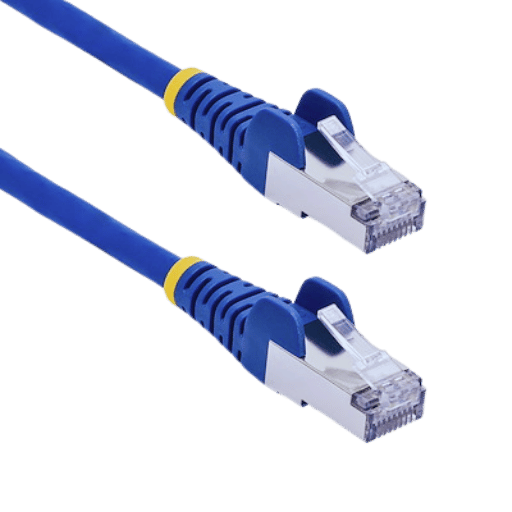
The speed, applications, shielding, and technology used in Cat 8 cables differ greatly from previous generations of Ethernet cables. Unlike Cat 6 and Cat 6a cables that have a maximum speed of 10 Gbps over 55 and 100 meters respectively, Cat 8 cables are designed for 40 Gbps over shorter distances (typically 30 meters). This makes Cat 8 suitable for data centers and high-performance networking setups where bandwidth demand is exceptionally high.
Shields are another distinguishing factor. Cat8 cables are fully shielded with S/FTP or F/FTP (Shielded/Foiled Twisted Pair), which limits EMI and ensures reliable performance in environments with heavy electronic activity. Previous cables (such as Cat 5e or Cat 6) may have had partial shielding or no shielding at all, which would decrease performance in such conditions.
In comparison to Cat 6a’s 500 MHz, Cat 8 also supports higher frequencies of up to 2000 MHz. The increased frequency allows for increased transmission speeds without degrading the quality of the signal. This makes Cat 8 more suitable for modern demands, including 4K video streaming, IoT networks, and server-to-server communication in professional settings.
Like other cable types, Cat8 cables have more shielding than Cat5 cables which makes them out of more durable materials; hence cables of this type are more thick and physically durable. These cables come with RJ45 connectors which guarantees backward compatibility with older ethernet ports making integration into pre-existing infrastructures easier. Regardless, Cat8 cables are more expensive compared to older cable categories such as Cab5 due to their advanced performance and specialized applications. Cat6 or Cat6a would be more suitable for day-to-day home networks, but if the condition requires low latency and high data transfer speeds, chances are Cat8 would be the best fit.
Cat 8 cables can be connected to older equipment as long as they have ethernet RJ45 ports i.e. Cat 8 cables can be used with older equipment. This is because Cat 8 cables are designed in such a way that they are backward compatible with previous ethernet versions like Cat 5e, Cat 6, and Cat 6a. Make note that the network performance is limited by the older devices. For example, if the hardware that is used is only capable of 1 Gbps speed, then the Cat 8 cable will only work at that speed even though it can transfer data at 40 Gbps over short distances of up to 30 meters.
Cat 8 cables can still be used with older infrastructure which provides better protection against crosstalk and other types of interference. For those looking to upgrade their cabling in the future, this could be the ideal upgrade. However, it is suggested to equip Cat 8 cables with modern devices that use high bandwidths to maximize their potential ropes.
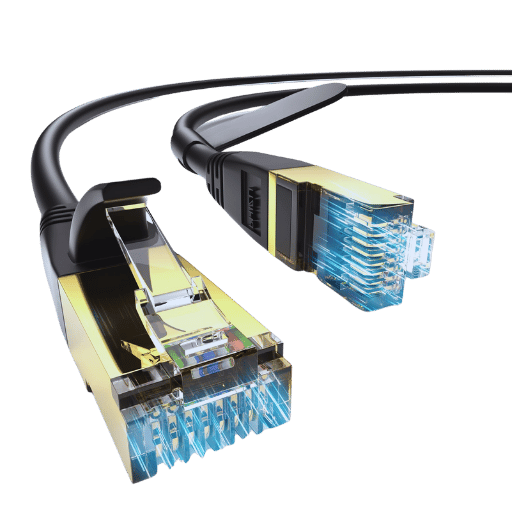
Cat8 cables are the latest in the networking technology evolution. These cables are purpose-built for high-density and high-speed network environments. Cat8 cables comply with the ISO/IEC 11801 standard and like other Cat (categories of ethernet cables), they also have a 2000MHz bandwidth frequency rating making them ideal for data vaults, enterprise networks, and anywhere else that relies on ultra-fast connections These cables are different from previous standards of ethernet cables in that Cat8 Cables allow data transfer speeds of 40 Gbps over distances of 30 meters which is perfect for short-range applications like server-to-switch connections.
One of the most notable features of Cat8 is its shielding innovation. The cables have a heavy shielding made out of Foiled Twisted Pair (FTP) which prevents crosstalk as well as electromagnetic interference (EMI). This is especially useful for areas with a lot of electronic noise as it makes data transmission much more reliable. What is also worth mentioning is that these cables come with an RJ45 which makes them backward compatible with earlier networks as well as flexible for use in many different network configurations.
Another critical aspect behind the Cat 8 technology’s adoption is its emerging technology support. As the expansion of IoT devices, cloud computing, and 5G networks continues, the infrastructure will need to manage ever-increasing data volumes. Cat 8 cabling helps to bridge this gap as it enables organizations to network-proof their networks for increased future bandwidth requirements. Future-proofing networks are crucial to meeting the growing bandwidth requirements. Like other networking solutions, Cat 8 also uses a cable comparison with Cat 6 vs Cat 7 vs Cat 8 and unlike its predecessors Cat 6 and Cat 7, it offers up to four times greater bandwidth capacity.
While Cat 8 offers unrivaled speed and reliability, certain use cases require those attributes over range. Such scenarios include HPC systems or large-scale data centers where having every microsecond is essential. In those cases, Cat 8’s low latency and high throughput enable operational efficiency. In addition, the growing need for advanced durability with consistent performance makes Cat 8 pivotal in networking technology evolution.
The deployment of 5G networks and their accompanying services increases the need for infrastructure that supports high data rates and lower latency. The requirements of 5G are well met by Cat8 cabling’s capability of 40 Gbps over short distances. This makes it suitable for connecting important equipment in peripheral and central locations like data centers. Its performance at higher frequencies guarantees dependable communication between components of the network so that 5G systems may function at peak levels. When Cat8 cabling is used in network backbones, bandwidth delivery is maximized while maintaining stable connections, fulfilling the demanding requirements of operations that rely on 5G.
The emerging technologies in one way or another are demanding more speed, efficiency, and reliability from Ethernet cables, which has become the main focus in researching the future of Ethernet cables. Advancements in technology have also made it possible to construct cables that can surpass the 40 Gbps threshold required for AI, IoT, and edge computing. Additionally, work is also being done to improve energy efficiency and ensure power consumption is low. Ethernet cables are expected to have adopted advanced shielding and materials to contend with lower signal interference at a higher frequency than previously used. The supported standards will also likely make the dip in power consumption more evident. Such advancements are essential to maintain the relevancy of Ethernet in high-performance network systems.
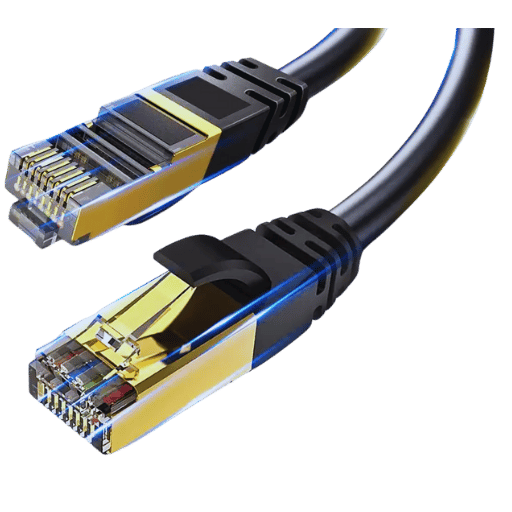
A: In the Ethernet cable family, Cat 8 (or Category 8) is the latest and greatest in terms of performance. It is a lot better than the earlier versions. Cat5e manages 1 Gigabit with a bandwidth of 100 MHz while Cat6 offers 10 Gigabits at 250 MHz, and Cat7 delivers 10 Gigabits at 600 MHz. In comparison, Capacitor 8 provides 40 Gigabit speeds and 2000 MHz of bandwidth. Also, the cables have better shielding than the earlier versions to reduce interference which makes them perfect for high-speed data centers and other uses with peak network performance.
A: Cat8 Ethernet cables have data transfer capabilities of up to 40 Gigabits per second (40 Gbps) and some are capable of 25 Gbps with a bandwidth of up to 2000 MHz (2 GHz). This advance in high-speed capabilities is a great improvement from earlier versions, stating that Cat8 cables are preferable in cases with heavy data usage and low latency. The added bandwidth permits a greater transmission of data at the same time which improves overall network performance in high-demand environments.
A: Yes, Cat8 ethernet cables are compatible with standard network equipment, though it is recommended to use earlier models such as Cat5e, Cat6, and Cat7. If you connect a Cat8 cable to a regular gigabit switch or router, you will only receive the speed supported by your network equipment. It is critical to note that to obtain the full 40Gbps benefits of Cat8, all connected devices and network hardware must support extremely high speeds. Many consumers do purchase Cat8 under the assumption that it is a good future-proofing device, even when their existing technology is not able to cater to its capabilities.
A: Yes, this is true. Cat8 ethernet cables do support Power over Ethernet (PoE) technology. The newer and improved structure, featuring better gauge wires and enhanced shielding of Cat8 cables, allows Cat8 ethernet cables to handle PoE applications more efficiently than their predecessors. This makes them excellent choices for powering devices like security cameras, wireless access points, and VoIP phones through the same cables that carry data. The robust design of the Cat8 ethernet reduces the loss of power and heat induced during PoE applications.
A: Standard RJ45 connectors are used on Cat8 Ethernet cables, similar to those found on Cat5e, Cat6, and Cat7 cables. However, Cat8 connectors are typically fully shielded to preserve high-frequency signal integrity. Some specialty versions of Cat8 may possess different connectors for certain industrial applications, but for the majority of consumer and business use, the notorious RJ45 connector suffices. This preserves networking capabilities with pre-existing equipment and mesh with enhanced performance.
A: Cat8 Ethernet cables can be found at several vendor locations. Amazon, especially for those who follow our recommendations, is one of the more popular locations. Other tech specialty stores and online electronics retail shops also offer them. When buying, ensure that the cables have authentic certification logos showing that they have met the Cat8 criteria. Prices shift drastically from manufacturer to manufacturer due to the length of cable, quality of shielding, and shielded grade. Many tech reviewers, as Amazon associates, earn from qualifying purchases, so recommended purchases may be found on tech review sites or YouTube channels where experts post original content comparing network equipment.
A: You won’t find many home users who need to upgrade to Cat8 from Cat7/Cat6, but in the context of comparing cables, there are some scenarios where Cat8 makes sense. For instance, a home server user where high-speed data transfers are done between local devices would benefit from Cat8, as would someone wanting to future-proof their home network, those with specific bandwidth requirements like multi-device streaming of 4K/8K videos, or those subject to severe electromagnetic interference in their homes. For everything else, like casual browsing, streaming, online gaming, and even more demanding tasks, using Cat7 or Cat6 tends to deliver enough performance at a lower price.
A: Compared to other categories, Cat8 Ethernet cables are said to have much better shielding. Cat5e has little to no shielding, and Cat6 may have some basic shielding, but unlike Cat7, Cat8 (like Cat7) has multiple layers of shielding. Usually, Cat8 has individual shielding for each pair of wires (S/FTP – Screened Foiled Twisted Pair) plus an overall shield for all pairs. This type of shielding construction greatly reduces electromagnetic interference (EMI) and crosstalk. This allows the cable to maintain much higher signal frequencies (2000 MHz) than Cat6 (250 MHz) or even Cat7 (600 MHz) and much higher than Cat6 (250 MHz).
A: As stated in our prior discussions, the total distance for optimal performance at 40Gbps is 30 meters (roughly 98 feet) for Cat8 Ethernet cables; this is also the maximum recommended length. In comparison to 100 meters on Cat5e and Cat6 cables, this is less. This limit has to do with the higher operational frequencies of Cat8. The signal degradation over longer distances is more problematic at these frequencies. For use cases needing longer runs, it may be required to use signal boosters or change the network topology. If you’re using Cat8 for standard gigabit connections, the cable will work at longer distances, but you won’t be using its high-end features.
1. EMC Performance and Alien Crosstalk Conformance for Cat8 Cables
2. CAT8 Network Cable Connector Capable of Enhancing Network Transmission Shielding Function
3. Construction Methods and Mechanical Impact Studies of Soft Stratum Pipe-Jacking Crossing Anchor-Cable Group.
5. YouTube